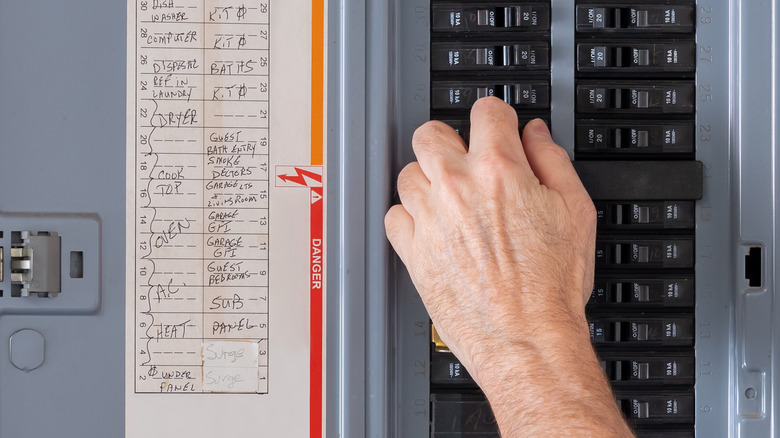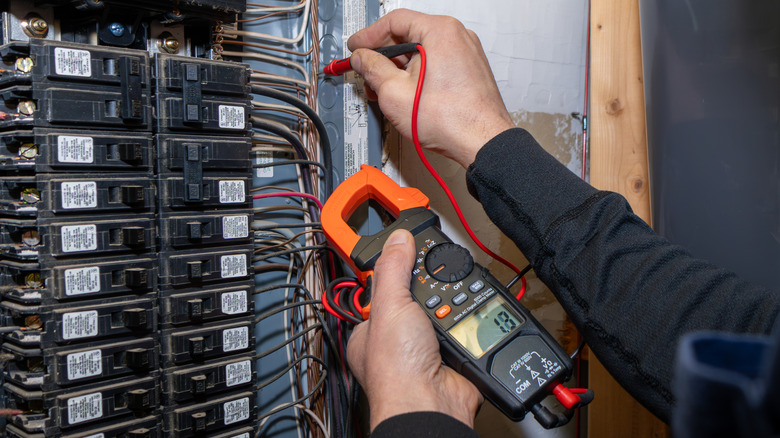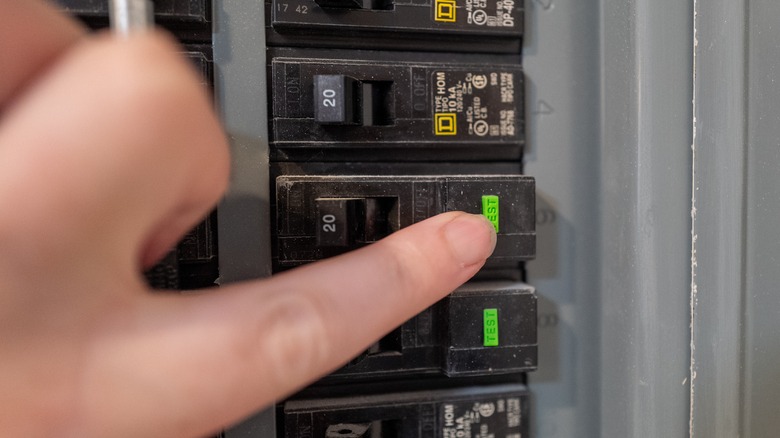An Easy-To-Understand Guide To Dryer Circuit Breaker Sizes
The wiring and devices we plug our dryers into cause a lot of confusion for homeowners and even DIYers with a basic understanding of electricity's workings. The worst of it usually comes when considering how to handle an encounter with a three- or four-slot dryer receptacle and a cord that doesn't match, but fortunately dealing with circuit breaker sizes is much simpler. There are only three options: 15- and 20-amp, 120-volt breakers and 30-amp, 240-volt breakers. You also have some options when it comes to GFCI and AFCI protection, but it doesn't really complicate things much.
There's only one circumstance in which all of this might not apply to you: Time-delay fuses may be used in place of circuit breakers for dryers, depending on the manufacturer's instructions. The built-in delay allows for a short-term spike in current, which is common with electric motors, particularly when they first start up. Otherwise, the spike might blow the fuse every time the dryer starts. This time-delay functionality is built into circuit breakers.
Your dryer determines which circuit breaker you need
Which circuit breaker you need is governed by a very small number of factors. One of them is the particular dryer you are using. The 15- and 20-amp, 120-volt circuits are for gas dryers that don't require the additional voltage and current to run a heater, since the heating is done by gas. If your laundry room is equipped with a 15-amp circuit, you may continue to use it, but electrical codes for new construction require 20-amp circuits for gas dryers, including a 20-amp circuit breaker. These are standard breakers that are installed like the ones for other rooms in your home.
The 30-amp, 240-volt circuits are for electric dryers, which require more voltage and current because their heating elements are electric. Wiring a 240-volt, 2-pole circuit breaker can be a confounding experience, especially for new homeowners learning about circuit breaker boxes for the first time. (And it's probably best left to a licensed electrician.) You'll have two hot wires rather than one (they're usually red and black) that connect to the breaker's terminals. A white neutral wire, if one is present, should also connect to the breaker. Your ground wire (usually bare copper) connects to the ground bar near the breaker.
But the wiring also determines the circuit breaker
When you're wiring a circuit breaker for a dryer, there are a couple of important details to keep in mind so you'll stay safe and up to code. First, the ampacity of your breaker can't exceed the amp rating for your wiring. This means that your 30-amp breaker requires 10 AWG (American Wire Gauge) cable or thicker. Putting your dryer at one end and a 30-amp breaker at the other end of thinner wires (12/3 cable, for example) creates a fire risk by running too much current wires not sized for it. A 20-amp gas dryer breaker requires 12-gauge or thicker wire, while a 15-amp breaker requires 14-gauge cable.
There's one more breaker detail to keep in mind. Electrical circuits for dryers are required to have ground fault circuit interrupter (GFCI, sometimes abbreviated GFI) protection. Circuits (15- and 20-amp) for gas dryers must have both GFCI protection and arc-fault protection (AFCI or AFI). Even where AFCI/GFCI outlets (and even blank "receptacles") exist for adding protection to a circuit, it's safer to use a GFCI circuit breaker (for 30 amps) or a dual-function AFCI/GFCI (for 15 or 20 amps) instead because the breaker will protect the cable between the breaker and the first receptacle. A GFCI (or dual-function) receptacle will only provide protection downstream of (and including) itself.



